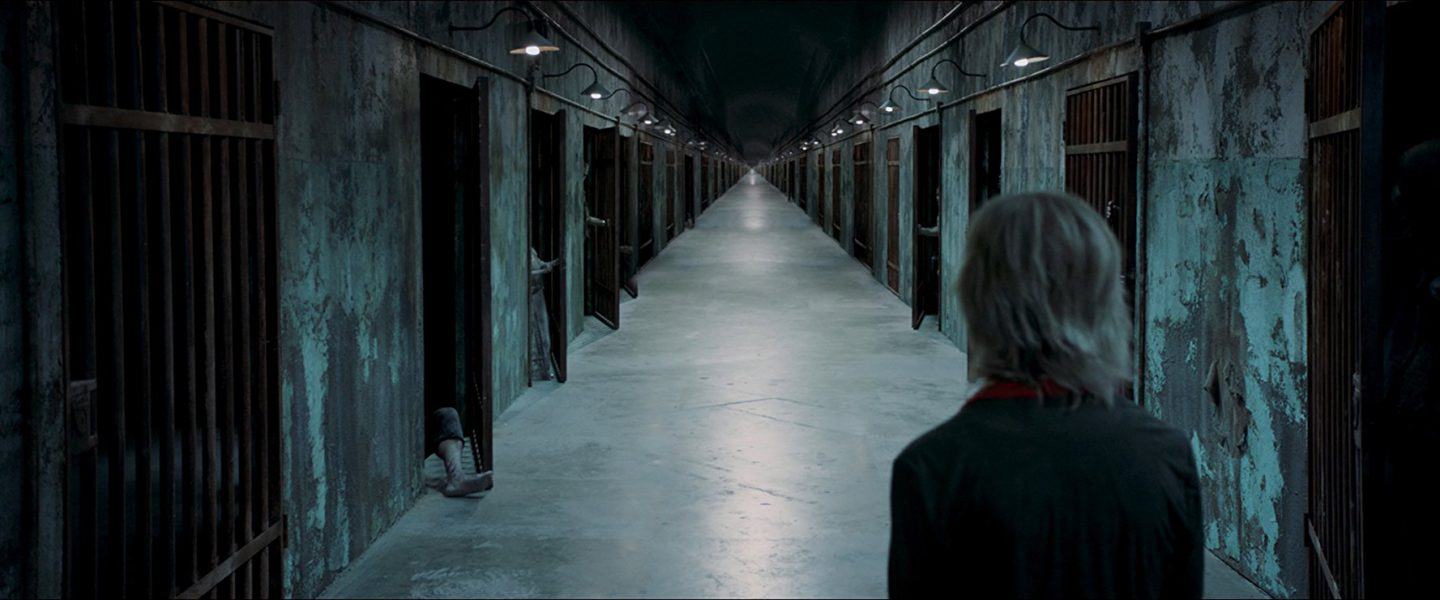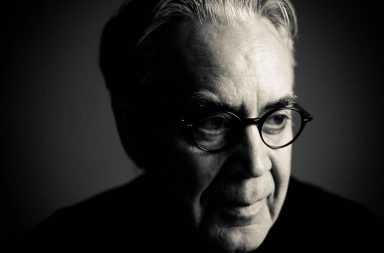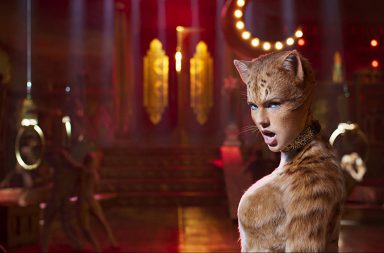Joseph Bishara’s distinctive sounds of fear have become instant classics in modern horror, from the violins screeching over the titles in Insidious to the disquieting, buzzing brass that defined the sound of The Conjuring. The 47-year-old American composer truly is a master of horror, and his many projects with the genre’s biggest names in recent years – James Wan, Jason Blum, Darren Lynn Bousman – continue to develop his own universe and are a passage towards his dark, experimental musical world. Some words can define the universe he created: dissonant, manipulative, cutting-edge, disquieting, creepy… Nothing comforting, let’s admit it, but with his music, the composer brings an avant-garde sensibility to those films in order to give fear a powerful sonic dimension, which is something that the horror genre seemed to have abandoned in the 1990s and the 2000s.
After composing the very disparate scores to Insidious: The Last Key – the fourth installment in the franchise – and The Worthy – an Emirati post-apocalyptic thriller – we are delighted to have Joseph Bishara share with us his experience on these two films and some thoughts about music in horror films.
 How did you end up composing music for films?
How did you end up composing music for films?
I’ve been wanting to compose music for film since I was very young. I started playing trumpet as a kid and I went from there to keyboard, to guitar, and ended up doing a lot of studio work, playing in bands, touring, remixing productions… I did all that for some time, but I always had an eye on wanting to score films, particularly darker material. The first opportunity to really get into something that would be seen film-wise was working with the band Prong on a song for the film Strange Days, and the music supervisor asked me to score their trailer. So I did it, and from there, I ended up doing a bunch more of that and slowly, the film opportunities started to come.
What are your main inspirations in music? What horror film scores have been the most important to you?
Well, certainly as a viewer and a listener, there are many film scores that grabbed my attention. I got really into the Italian horror genre in particular, so the films of Argento, Fulci, that world… Suspiria, for sure, is an incredible piece of work. In all of the Goblin/Argento collaborations, there’s something interesting happening there. Even scores and sonic pallets for films like Tombs of the Blind Dead, where it’s a pulse and a groan, and you’re just really feeling this energy… In horror more than in other genres, it seems, because you’re really personifying the essence of the film, sonically. But as far as some other scores that I remember as being important to me at the time, I always loved Pino Donaggio’s score for Tourist Trap. Altered States was definitely a big standout for me as well, and of course I have to mention the Howard Shore collaborations with David Cronenberg: Videodrome, Scanners… That period is very, very rich.
The Last Key is the fourth Insidious film. Do you find it still exciting to explore this universe?
Definitely, yeah! It’s still inspirational, for sure. For me, it’s been really creatively satisfying to get to reimagine a language for a film, but through the filter of what the next film is, which is always going to be a bit different. Even if it is similar, it’s still a different colour… It’s like a different dialect of the same language, so that’s why it is still so creatively rich for me.
Your style is very textural and develops the atmosphere of the film. Insidious: The Last Key, on the contrary, focuses mainly on the characters, and in the film, the music is used sparingly. Has it been affecting your composing process?
I can’t say it changed my process that much… Even in the first Insidious film, there are long stretches with no score. I mean, in the first reel of the film, there’s music in the opening and then, there’s a whole long stretch where there’s no score, then we can hear a small piece of music followed by another stretch with no score. Using the combination of periods of no score or extremely minimal score where something is barely there is very much a part of that language.
How was it, working with three different directors on the same franchise? How much direction did they give to you?
Everybody has their own process, for sure. They all have their own ways of looking into things, but working with James Wan to create the initial round of what this whole place sounds like, getting to explore it further in the second film, and then step over to work with Leigh Whannell on the third film… Well, Leigh has a different approach than James, and Adam Robitel as well. I had some great early conversations with Adam, but it always comes down to the same thing. It’s like you’re really trying to hear where they are coming from in the storytelling. Ultimately, the job of the music is really to be about getting into their head as far as the storytelling aspects of where they’re coming from and what’s important to them, what they’re trying to get across with certain areas… In some ways, it’s always the same, it’s always trying to get on board with the same language as the story we’re all trying to tell here.
Is your acting career part of the process of willing to scare people?
(Laughs) It kind of has been! It’s interesting how it has worked out. It was great to get to do it. It is a really valuable place to get any kind of information on the film. As a composer, I feel it’s like I’m coming in hungry for any information on the film and the story we’re trying to tell, whether it is how it looks like, what are the performances like… Being on set, in the inside of the fabric of the scenes as they’re happening, and hearing the directions, the intentions of what is being made there, there’s so much to draw from it! It’s a much higher level of immersion; is it absolutely necessary? No. But I think it can be valuable when it is used as an asset.
Strings are very important in horror film scores, but the way you usually use them is far from being classical. Is this something that has more to do with a process of desacralization or is it because you want to scare in a way that is off the beaten track?
I don’t know if it is about consciously trying to sound a certain way, or if it’s about being traditional or not traditional… For me, it is often about trying to get myself in a place where I can hear an inner voice as clearly as possible so I can translate that. So the way that I write for strings really is about finding a suitable voice for all these things that I’m hearing in my head.
How did you get involved in the making of The Worthy?
The project was brought to me by Peter Safran, who was one of the producers on The Conjuring. The director, Ali F. Mostafa, was a very interesting director to work with, and he was very influenced by the score for The Conjuring, playing it during dailies… So Peter made the connection, and to me it seemed like a great challenge, working on something where there’s a very non-American sensibility in the way the film is made.
You have experimented a lot of things with The Worthy: the score is very heavy and it has been involved a great deal in the film. There are both orchestral and electronic pieces, the cues can be very dark, very uncomfortable, but you have also composed some soft, ambient cues in which the melody is what’s most important. Can you tell me a bit about your composing process for this film?
Yeah, the film had very different needs… The first thing I thought of was this colour, and I thought the best way to translate that was a three-part bassoon writing, so the bassoon trio was a big part of the core sound of that, particularly amped bassoons because I wanted to pick up the grit on the round sound of the instrument. That was where it started, so it grew from there. Thematically, the last scene of the film was very important, so that was where I started. I tried to find what was going to work for the very end of the film and then I would deconstruct it, working backwards rather than starting with a simple theme and making it evolve through the rest of the film.
You have an avant-garde approach to your compositions. Do you ever get involved in sound design when you are scoring a film?
The sound design job is a huge one, so there’s always sound designers on a film. The last thing that I’d want to do is getting in their way, but sometimes I’m asked for things, like a very specific sound… See for instance, in the latest Insidious film, Leigh had asked me to create a sound… You know, sometimes, you just have to have a sound that goes along with a place, and in this film, the basement has a tone. It’s kind of sound design, but they wanted it to be handled via score, just because it is a different approach. On Insidious, I’ve worked on my own demonic roars and sounds for the Lipstick-Face Demon character, so, yeah, sometimes it does cross over, but the sound design world is very much its own world.
Are there still things in film music that you want to try?
There’s a lot of things that I’d love to try, it’s just a matter of finding the right voice for whatever the project is, and to try to do something just for the sake of it isn’t interesting to me. It has to be organic, it has to make sense within a language. I mean, I mostly do horror film scores, which is great, but I’m not exclusively in the horror genre.
Horror has evolved a great deal up to this day. Now, horror films deal with social and political themes more and more often, which was something that only a few directors dared to do some twenty, thirty years ago or more… And the way those films sound is also different, because the music doesn’t have to be one of the scary elements anymore.
Horror is just an entry. It’s always going to have the sensibility of the time that it grew out of. Even the very small things the characters do in the seemingly throwaway moments really speak volumes about the time where they came from. Based on that, it’s always going to be different. I don’t know if it is something brand new, but I think you’re right, there’s definitely something going on with that; there’s more people today, more things happening, so there’s a wider pallet of things to tap into.
Interview prepared, conducted and transcribed by Valentin Maniglia
Edited by Marine Wong Kwok Chuen



